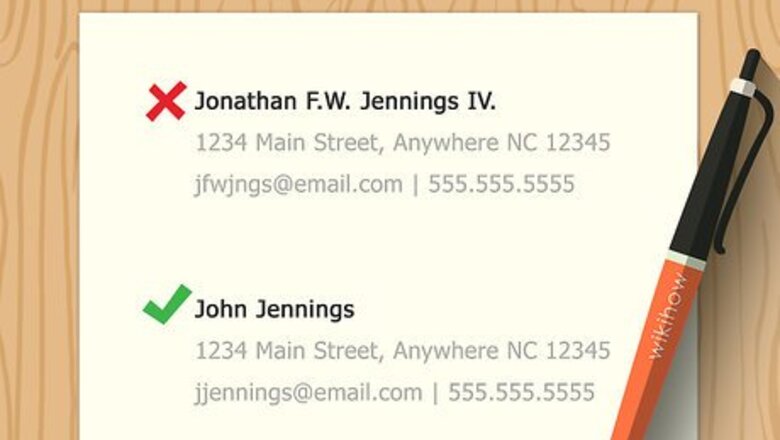
views
- Use your nickname instead of your birth name if it’s something you’ve always gone by and is appropriate for the workplace.
- Place a casual nickname in quotations between your first and last name to show that you can go by either name.
- Use the same name throughout your resume and put your legal name on formal employment paperwork.
Formatting & Sharing Your Nickname

Use your preferred nickname in place of your legal name. If you always go by your nickname, listing it on your resume instead of the name you were given at birth is perfectly acceptable. For instance, put down “Brad” instead of “Bradley” or use “Lucy” instead of “Lucinda.” Using the shorter version of your name can even make it stand out. For example, “John Jennings” has a better ring to it than “Jonathan F.W. Jennings IV.” The same can be done if you go by your middle name, although omitting your first name, in this case, may be helpful to avoid confusion.
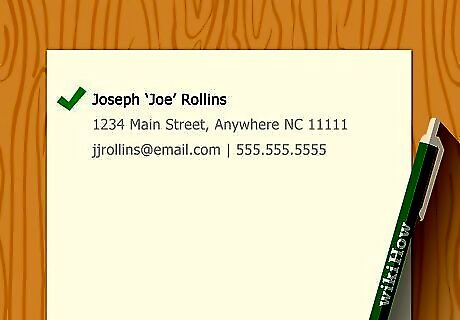
Put nicknames in quotation marks between your first and last name. In situations where people use your nickname and given name variably, it can be helpful to include your nickname within the formatting of your legal name. If your name is “Joseph” but you also answer to “Joe,” write your name as “Joseph ‘Joe’ Rollins.” This format works best for monikers that are abbreviations of longer names, such as “Matt,” “Jeff,” “Liz,” and “Alex.” However, your nickname can also be put in quotation marks when it’s unrelated to your legal name (as in “Margaret ‘Carol’ Atkinson”).
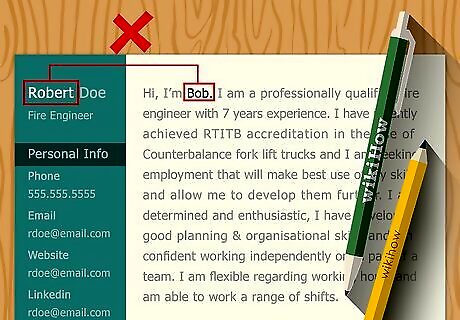
Stick with the same name throughout your resume. No matter what name you go with, the most important thing is to use it consistently. Listing your name as “Robert” in one section of your resume and “Bob” in another could be confusing for an employer. Even worse, it could make your resume look disorganized. Generally, your safest bet is to put down whatever name you respond to most often.

Tell your potential employer your nickname in person. As an alternative option, provide your legal name on your resume, then mention your preferred name when you meet with the interviewer or hiring coordinator. This is the most practical option if you want to keep the information on your resume strictly professional. Think of it like telling a teacher your nickname in school. When the teacher called attendance on the first day, you may have said something like, “Present. Although, I go by Cam.” Use this same technique when introducing yourself at the start of your interview: “It’s a pleasure to meet you, Ms. Adams. I’m Cameron Wallace, but you can call me Cam.” One downside of this approach is that it may be hard for a coworker to get in the habit of addressing you by your preferred name after committing the name listed on your resume to memory.
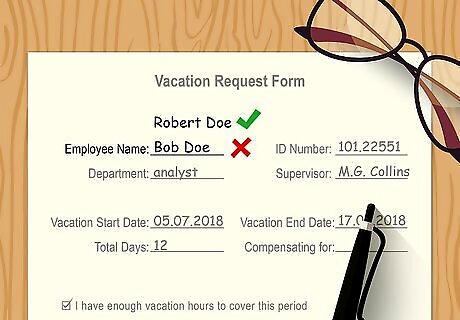
Use your legal name on formal employment paperwork. Your resume isn’t a legal document, but job applications, contracts, and employee information forms are. Anytime you’re filling out hiring paperwork, always provide your first, middle, and last names the way they appear on your birth certificate. That way, there will be no question as to who you are. Many hiring forms offer prospective employees a place to include a preferred name or nickname. Having the wrong name on file with your employer could result in other unintended consequences, such as sending important files to the wrong person.
When to Use a Nickname on a Resume

Use your nickname if it's professional. Before you include your nickname on your resume, consider how it might be viewed by the employer reading it. By presenting the wrong image up front, you could take yourself out of the running for a job you might otherwise have landed. Certain nicknames may be more suitable for some workplaces than others. It may be okay to go by “Venus” at a holistic therapy center but not so much at a high-profile financial advisory firm.

Give your preferred name if you're transitioning. As a transgender person, put whichever name you prefer on your resume in place of your legal first name. Some trans professionals choose to list their legal name first, followed by their preferred name in parentheses (i.e., "Greg 'Shannon' Collins")—use whichever method works best for you. In some cases, it may be necessary to provide your legal name when filling out job applications, registration forms, and other legal documents to complete background checks.

Shorten your name to initials to prevent hiring biases. Even though it’s illegal in most places, screening based on name (intentional or not) happens. As a woman, minority, or senior citizen (or other discriminated class), providing an abbreviated form of your legal name can be used to avoid workplace discrimination. The idea is that an employer won’t be able to tell your sex, nationality, or age just by looking at your name or resume. For example, if you’re worried about being passed over because you’re a woman, simplifying your name from “Rhonda Jeanette Schmidt” to “R.J. Schmidt” helps conceal your sex until the interview. The same can be done for names that indicate ethnicity. With a little tweaking, “Ángel Castaneda Martín” becomes “A.C. Martin.”

Use a nickname if your name is difficult to pronounce. Depending on your location, a birth name may be difficult for people to say correctly. Consider using a nickname that’s easier to pronounce to avoid mispronunciation or confusion. The decision to use a nickname instead of your birth name is entirely up to you. If you love your birth name, own it! Alternatively, put the phonetic spelling (how a word is pronounced) of your name in parentheses beside or underneath your name. This way, an employer will be able to sound out the phonetic spelling.
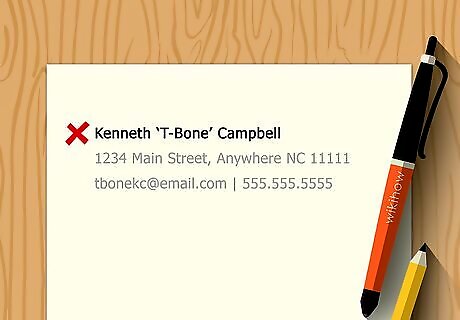
Avoid listing offensive or overly casual nicknames. If your nickname isn’t related to your given name, your resume likely isn’t the best place to display it. This applies to any handle that’s not a specific name. For instance, professional employers may be reluctant to hire someone who goes by “Lefty” or “T-Bone.” If you’re attached to a particular nickname, ask your coworkers to use it privately after landing the job to avoid workplace discrimination. A rare exception to this is when you’re known for your nickname. This may be the case for entertainment personalities, sports figures, and performers with unique stage names.

















Comments
0 comment